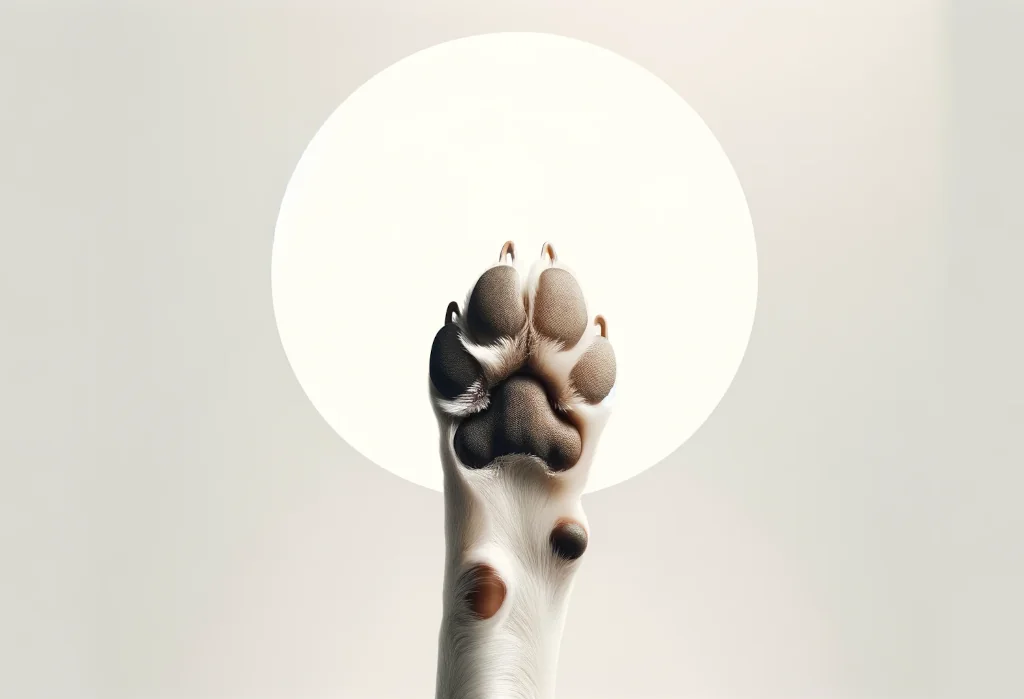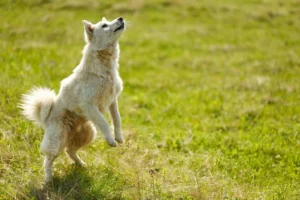Whoever said you can’t teach an old dog new tricks clearly never tried teaching them to wave goodbye. It’s not just for kids and pageant queens; your furry best friend can get in on the action too.
By the end of this post, you’ll have all the steps and tips you need to turn your pup into the politest pooch on the block, confidently waving “hello” and “goodbye” like a furry little royal.
Key takeaways:
- Teaching your dog to wave is not only a fun party trick but also provides mental stimulation and strengthens your mutual bond.
- Start with the basics of “shake hands,” then introduce the “wave” cue, progressing to waving on verbal command alone.
- Maintain short, enjoyable training sessions to keep your dog engaged, practicing regularly for the best results.
Why Should You Teach Your Dog to Wave?
Learning new tricks isn’t just a way to show off your dog’s cool moves to friends and family. It’s also about giving your furry buddy the mental workout they crave and deserve. When you teach your dog to wave, you’re engaging their mind, providing them with valuable mental stimulation. This prevents boredom and can reduce the likelihood of unwanted behaviors that stem from a lack of mental engagement.
Moreover, this training extends far beyond a simple greeting gesture. It strengthens the bond between you and your pet, as you work together and communicate effectively. As your dog masters the wave, you’re also enhancing their basic obedience skills, increasing their focus and improving their dexterity. Plus, let’s face it, it’s also just downright fun!
What Do You Need to Get Started?
Before you dive into teaching your pup this charming trick, you’ll need a few things:
- Treats: Have a stash of your dog’s favorite rewards at hand. They’ll be the key motivator throughout the training sessions.
- Quiet Space: A calm area with minimal distractions will help your dog concentrate on the task.
- Patience: Remember, every dog learns at their own pace. Patience is crucial during training sessions.
Creating a positive environment is essential for an effective learning experience. Ensure that each training session ends on a good note, so your dog will look forward to the next one!
How Can You Prepare Your Dog for Training?
Before your dog can wave like royalty, they need a good grasp of basic commands like ‘sit’ and ‘stay’. These fundamentals form the building blocks for more complex tricks and ensure your dog can maintain a position while learning to wave.
To gear up for a pawsitive training experience, make sure you:
- Associate training with fun and rewards. Start each session with positive energy, and don’t forget to praise and treat your dog for their efforts.
- Keep sessions short and sweet. Dogs often have short attention spans, so training in brief bursts can keep them engaged.
One thing many trainers overlook is the importance of a tailor-made approach. Each dog is unique, and what works for one might not work for the other. Pay attention to your dog’s demeanor during training and adapt your methods accordingly. This personalized aspect can make all the difference and isn’t just a treat for the pooch, but it can significantly increase the success rate of the trick learning process.
Remember, your time with your dog is precious, and every training session is an opportunity to deepen the companionship you share. So keep at it, and soon enough, you’ll both be waving goodbye to the days without this cute trick in your repertoire!
What Are the Steps to Teach Your Dog to Wave?
Step 1: Get them paw-sitive! Start by getting your furry friend interested in lifting their paw. This can be done through a simple ‘shake hands’ trick. Sit down with your dog and gently tap their paw while saying “shake.” When they lift their paw, reward them with a treat and praise. Consistency is key, so keep at it until they’re offering their paw regularly.
Step 2: Introduce the cue. Once your dog is a pro at shaking hands, it’s time to up the ante. Initiate the shake, but as your dog raises their paw, introduce the “wave” command. Pull your hand back before they make contact, and if they continue with the motion, give them a treat. With practice, your dog will start associating the command with the motion.
Step 3: Phase out the prompt. Gradually, reduce the hand gesture you’ve been using until your furry pal is waving on only the verbal cue. This will take some patience, but before you know it, they’ll be waving like a royal!
Step 4: Add a little razzle-dazzle. Now for the fun part—make it flashy! Encourage your dog to wave higher or to sustain the wave to make the trick even more impressive. A slightly higher-held treat can coax them to reach further up.
Step 5: Practice in different scenarios. To ensure Fido’s wave isn’t a one-hit-wonder, practice in various settings with different distractions. Friends and family can be great ‘audience members’ for your dog to show off their new skill!
Step 6: Celebrate progress! Remember to celebrate each small victory with your dog. A happy “Good boy/girl!” or a loving pat goes a long way in reinforcing their behavior.
How Can You Troubleshoot Common Issues?
Training isn’t always smooth sailing, but don’t fret. Here are a few quick fixes:
- If your dog isn’t responding to the cue, backtrack to the last step they performed well at and reinforce it. Slow and steady wins the race.
- Overexcitement can make a dog jumpy instead of wavy. If they’re too hyped, take a break and calm down the environment before returning to training.
- Adjust the challenge. If the trick doesn’t seem to be clicking, simplify it. Start with just lifting the paw before gradually building up.
Keep in mind that every dog learns at their pace. Patience is your best friend in these training sessions.
How Often Should You Practice the Wave?
Practice makes perfect, but too much can lead to frustration. Aim for short but sweet, about 10-15 minute sessions, a couple of times a day. The key is regularity—daily practices are golden, even if they’re brief.
Remember, quality over quantity. Each session should be fun and rewarding. Ending training on a high note will leave Fido eager for more. If either of you gets frustrated, take a breather and try again later.
Pro-tip: Keep sessions spontaneous, sprinkle them throughout the day instead of a strict schedule. This keeps your pup guessing and excited about what’s next.
Remember, the ultimate goal is to build a stronger bond with your dog while having a great time together. So enjoy every high five, err… wave, as you both learn and grow together!
Alex, a passionate animal lover, has experience in training and understanding animal behavior. As a proud pet parent to two dogs and three cats, he founded AnimalReport.net to share insights from animal experts and expand his knowledge of the animal kingdom.





